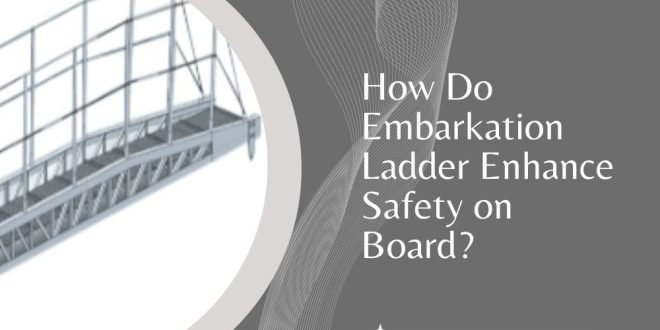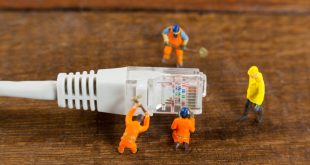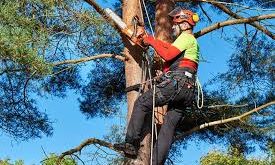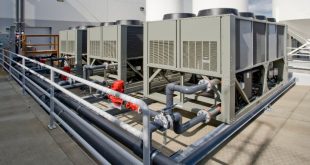Safety is one of the most crucial aspects of maritime operations, and embarkation ladders play a vital role in ensuring safe access for personnel boarding and disembarking vessels. These ladders are used in various scenarios, from pilot transfers to emergency evacuations, making their quality and design essential for overall onboard safety. In this blog, we’ll explore how embarkation ladders enhance safety, the different features that make them reliable, and what to consider when choosing one.
Understanding Embarkation Ladders
What Is an Embarkation Ladder?
An embarkation ladder is a flexible ladder made from durable materials, designed specifically for use on vessels. It is commonly hung along the side of a ship and secured at the top, providing a safe and stable path for personnel to move between the vessel and another platform, such as a pilot boat or dock. Unlike standard ladders, embarkation ladders are built to withstand marine conditions and ensure secure footing even in challenging environments.
Importance in Marine Operations
Embarkation ladders are essential in numerous marine operations, including:
- Pilot Transfers: Pilots use embarkation ladders to board large vessels and assist in navigating complex or congested waters.
- Emergency Situations: Embarkation ladders serve as escape routes during emergencies, allowing safe exit from the vessel.
- Routine Boarding: Crew members, inspectors, and other personnel regularly use these ladders for boarding and disembarking.
The ladder’s primary role is to ensure safe access and exit, making it a crucial piece of safety equipment on any vessel.
Safety Features of Embarkation Ladders
1. High-Quality, Durable Materials
Resistant to Harsh Marine Conditions
Embarkation ladders are exposed to saltwater, UV rays, and varying weather conditions. To withstand these challenges, high-quality materials such as hardwood, synthetic ropes, and rust-resistant metals are used. These materials resist corrosion, rotting, and wear, ensuring the ladder remains safe and reliable for extended periods.
Secure Rungs and Side Ropes
Each step or rung in an embarkation ladder is typically reinforced and securely attached to the side ropes, creating a stable and strong surface for users. High-quality rungs prevent twisting or breaking, which could otherwise lead to accidents during boarding.
2. Anti-Slip Steps
Secure Footing in Various Conditions
Embarkation ladders are designed with anti-slip steps, ensuring secure footing for individuals even in wet or slippery conditions. Anti-slip features, such as grooves or textured surfaces on the rungs, help prevent slips and falls, which can be especially important during rainy weather or when waves are rough.
Enhanced Safety During Night Operations
Anti-slip rungs are essential for safe transfers during nighttime operations when visibility may be low. By providing a firm grip, these rungs make boarding and disembarking safer, regardless of lighting conditions.
3. Compliance with International Safety Standards
Meeting IMO and SOLAS Standards
Embarkation ladders must comply with international safety standards, such as those set by the International Maritime Organization (IMO) and the Safety of Life at Sea (SOLAS) regulations. These standards specify the minimum requirements for ladder construction, material quality, and weight capacity to ensure safety.
Regular Inspections and Certification
Many embarkation ladders are inspected and certified by regulatory bodies to confirm their adherence to safety standards. Choosing a ladder that meets these certifications ensures it is designed and tested for reliable use in marine environments.
4. Flexibility and Stability
Designed to Withstand Movement
Unlike rigid ladders, embarkation ladders are flexible, allowing them to adapt to the movement of both the vessel and the pilot boat or dock. This flexibility reduces the risk of sudden shifts or unsteady steps, creating a safer experience for users.
Secure Attachment Points
A well-designed embarkation ladder includes secure attachment points at the top, ensuring it remains stable even in rough seas. This stability is crucial, as it allows users to board and disembark without sudden movements that could compromise balance.
How Embarkation Ladders Enhance Onboard Safety
1. Reliable Access in Emergency Situations
Critical for Safe Evacuation
In emergencies, such as a fire or collision, embarkation ladders offer a safe escape route for crew members and passengers. Their reliability and design ensure that personnel can evacuate quickly and securely, even in challenging conditions.
Reducing Panic During Emergencies
When an evacuation ladder is sturdy and reliable, it reduces panic and allows people to exit in an orderly manner. Knowing that a safe route is available during an emergency can also reduce anxiety and help crew members focus on essential safety procedures.
2. Ensuring Safe Pilot Transfers
Secure Boarding for Maritime Pilots
Maritime pilots often use embarkation ladders to board ships and guide them through harbors and congested waters. A well-made embarkation ladder provides a stable, secure path for pilots, minimizing the risk of falls or injuries during transfers, especially in rough seas.
Preventing Accidents During High-Risk Maneuvers
Pilot transfers are high-risk activities due to the movement of both the ship and the pilot boat. A strong, flexible, and secure embarkation ladder significantly lowers the risk of accidents, ensuring that pilots can perform their duties safely.
3. Safe and Convenient Access for Routine Operations
Daily Boarding and Disembarking
Routine tasks, such as crew members boarding and disembarking the vessel, are made safer with a reliable embarkation ladder. A stable ladder reduces the likelihood of slips or falls, ensuring that crew members can carry out their tasks confidently and safely.
Facilitating Inspections and Maintenance
Inspections and maintenance tasks often require personnel to board and disembark the vessel multiple times. Embarkation ladders facilitate these tasks by providing a dependable and easy-to-use access point, which is essential for maintaining efficient operations onboard.
Key Considerations When Choosing an Embarkation Ladder
1. Compliance with Standards
Verify Compliance with IMO and SOLAS
Always choose embarkation ladders that meet IMO and SOLAS standards, as these ensure the ladder is suitable for marine use. Compliance with these regulations guarantees that the ladder has passed rigorous safety tests and meets the requirements for marine operations.
Check for Additional Certifications
Additional certifications, such as those from marine safety organizations or testing agencies, can provide added assurance of the ladder’s quality and durability. Look for products with certifications that demonstrate adherence to high standards of safety and quality.
2. Material Quality and Durability
Opt for Marine-Grade Materials
Materials like hardwood, stainless steel, and synthetic ropes are commonly used in high-quality embarkation ladders. These materials resist corrosion, rot, and other forms of wear, ensuring that the ladder remains safe and functional even in saltwater environments.
Inspect for Durable Construction
Examine the ladder’s construction, particularly the attachment points, rungs, and side ropes. Strong construction and heavy-duty stitching or binding at the rungs ensure the ladder remains stable and reliable during use.
3. Maintenance and Inspection
Regular Inspection for Wear and Tear
Even the best-quality ladders can degrade over time due to exposure to marine elements. Regular inspections help identify signs of wear, such as frayed ropes or worn steps, so they can be replaced or repaired before becoming safety hazards.

Follow Manufacturer Maintenance Guidelines
Manufacturers often provide maintenance guidelines to extend the ladder’s lifespan. Following these guidelines, including proper storage, cleaning, and occasional replacements of parts, helps ensure the ladder’s continued reliability and safety.
4. Choose a Reputable Supplier
Research Supplier Reputation
Selecting a trustworthy supplier is essential to ensuring the ladder is of high quality and compliant with safety standards. Look for suppliers with positive reviews and a reputation for providing durable, certified marine equipment.
Seek Recommendations and Reviews
Recommendations from other marine professionals or reading online reviews can help you identify reliable suppliers. A reputable supplier is more likely to provide ladders that meet quality and safety expectations, giving you peace of mind.
Conclusion: Enhancing Safety with the Right Embarkation Ladder
Embarkation ladders are an integral part of marine safety, providing secure access for boarding, disembarking, and emergency evacuations. By choosing a high-quality ladder made from durable materials and compliant with safety standards, you enhance the safety of everyone onboard. Regular inspections, maintenance, and selecting a reputable supplier further ensure that your embarkation ladder remains reliable, safe, and ready for use when needed.
Prioritizing the right features and selecting a trusted supplier can make all the difference in marine safety, making embarkation ladders a valuable investment for any vessel. With the right ladder in place, you can confidently ensure safe access for crew members, pilots, and personnel under various conditions, supporting a safer maritime environment for all.
Note:- For read more articles visit on ptprofile.
 Diverse Perspectives: Insights & Stories Exploring Ideas, Sharing Knowledge
Diverse Perspectives: Insights & Stories Exploring Ideas, Sharing Knowledge





